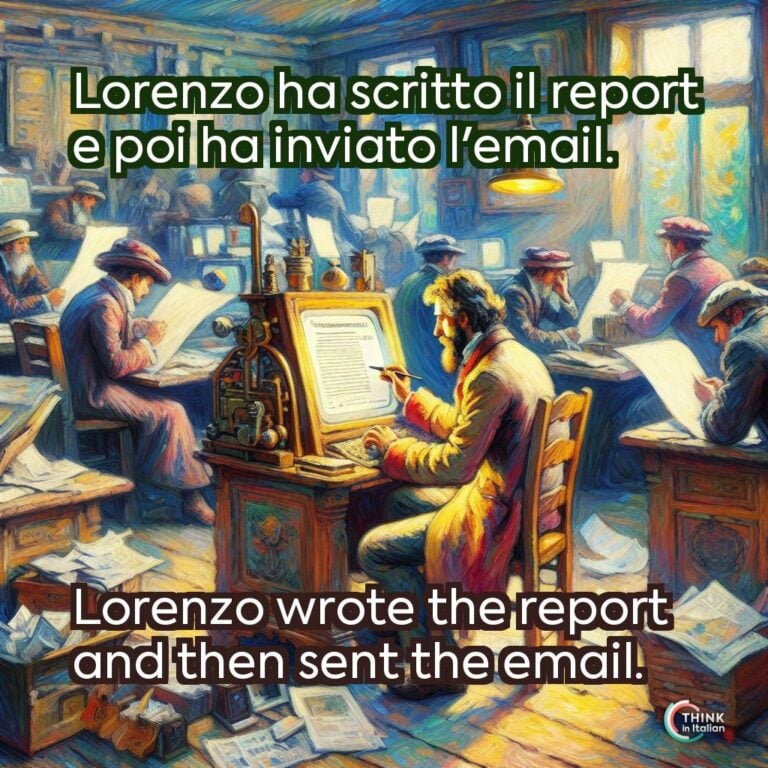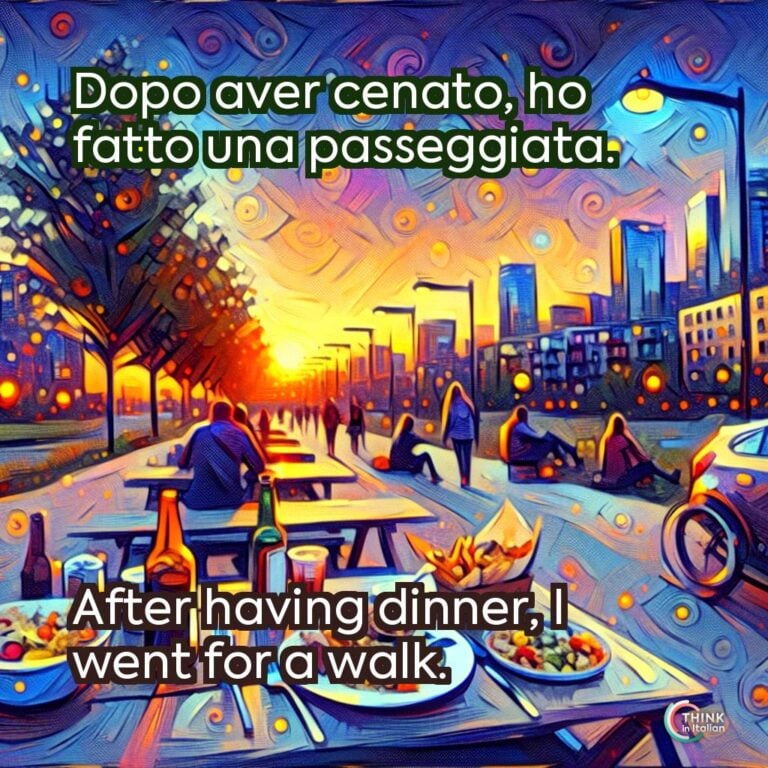“Then” in Italian
There are two words that translate to “then” in Italian, and these are poi and dopo. Although both can be translated similarly, they are not interchangeable and their usage depends on the context.
In English, “then” refers to an action or event that happens afterward. The same concept exists in Italian, but poi and dopo emphasize different aspects of timing and sequence.
To properly choose one or the other, you have to understand the context and the relationship between actions or events. Let me show you an example, and then I’ll guide you through the main differences:
Ogni giorno mi sveglio, faccio colazione, poi inizio a lavorare.
Every day I wake up, I have breakfast, then I start working.
Ogni giorno mi sveglio, e inizio a lavorare dopo aver fatto colazione.
Every day I wake up, and I start working after having had breakfast.
As you can see, poi focuses on the sequence of actions or events in a narrative, while dopo is more commonly used to indicate something that happens later in time compared to another event.
Poi vs Dopo
Poi in Italian
Poi is used to express the idea of “then” in Italian when narrating a sequence of actions. A tip I give my students to better grasp its meaning is to think of poi as meaning “next” or “afterwards”, rather than only “then”.
It helps them perceive the flow of events in a narrative, showing what comes immediately after something else, for example:
Prima mangiamo, poi usciamo.
First we eat, then we go out.
Vado al lavoro, poi torno a casa.
I go to work, then I come home.
Here, it marks that one action follows a chronologically previous one. Therefore, it is ideal to list actions that happen one after the other.
Sono andato al cinema e poi ho fatto una passeggiata.
I went to the cinema, and then I took a walk.
Here, instead, it connects two actions, indicating that the second event occurred after the first.
Sì, ci vediamo domani, poi ti spiego tutto.
Yes, I’ll see you tomorrow, then I’ll explain everything.
Finally, here it is used to introduce additional information in a conversation, often to elaborate on a plan or provide further context.
Dopo in Italian
Dopo is typically used to refer to something that happens later in time compared to another event. It is more focused on the timing of an event relative to another, for example:
Dopo la cena, andiamo al cinema.
After dinner, we go to the movies.
Ti chiamo dopo lavoro.
I’ll call you after work.
In these cases, it indicates that something will happen after another specific event.
Ti chiamo dopo.
I’ll call you later.
Here, it suggests that something will happen at a later point in time, but it doesn’t specify when.
La stazione sta dopo la banca.
The station is after the bank.
Unlike poi, dopo can also be used with a spatial sense, to indicate physical consequentiality.




